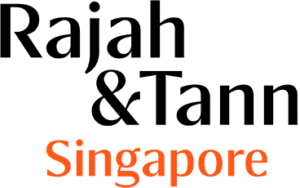Guide to Climate-Related Disclosures for Banks, Asset Managers & Insurers
Improving the quality of disclosures is vital to supporting the growth of green finance in Singapore. In this regard, the Green Finance Industry Taskforce (“GFIT“) issued an implementation guide for climate-related disclosures by financial institutions (“FIs“) on 19 May 2021 (“Guide“). The Guide details the best practices that are aligned with the recommendations of the Financial Stability Board’s Task Force on Climate-Related Financial Disclosures (“TCFD“).
As background, FIs are expected to make regular and meaningful disclosure of salient environmental risks applicable to their businesses. This is set out, amongst others, in the Monetary Authority of Singapore (MAS) Guidelines on Environmental Risk Management for banks, asset managers, and insurers (“ENRM Guidelines“) issued in December 2020. In addition, FIs which are listed on the Singapore Exchange Securities Trading Limited (SGX-ST) are subject to mandatory sustainability reporting, with the primary components prescribed in the SGX Listing Rules to be included in reports on a “comply or explain” basis for listed issuers for their financial year ending on or after 31 December 2017.
By focusing on climate-related disclosures, the Guide supplements the ENRM Guidelines as well as GFIT’s handbook that provides practical implementation guidance and good practices on environmental risk management. The Guide is relevant to FIs which are expected to meet the expectations of the ENRM Guidelines, namely, banks, asset managers, and insurers.
Presently, there are several standards and frameworks for sustainability reporting for various purposes that FIs may use as appropriate, such as the Global Reporting Initiative, the International Integrated Reporting Council and the TCFD. The Guide serves as a reference for FIs in making disclosures according to their chosen standard or framework.
For more information, click here to read our Legal Update.
Singapore IP Strategy 2030 – What Does it Mean for Your Business?
Singapore has unveiled its Singapore IP Strategy 2030 (“SIPS 2030“) at the World IP Day event on 26 April 2021. SIPS 2030 is a 10-year blueprint to strengthen Singapore’s position as a global intangible assets (“IA“) and intellectual property (“IP“) hub as well as maintain Singapore’s position as a top-ranked IP regime.
The full SIPS 2030 report (“Report“) (available here) was published in a joint press release from the Ministry of Law, Ministry of Finance, Ministry of Trade and Industry, and the Intellectual Property Office of Singapore (“IPOS“). The Report details the various aspects of SIPS 2030, which consists of three main objectives:
- Strengthen Singapore’s position as a global hub for IA/IP;
- Attract and grow innovative enterprises using IA/IP; and
- Develop good jobs and valuable skills in IA/IP.
The Report highlights that, with rapid advancements across diverse technology fields, the global economy is increasingly driven by IA, with global IA value standing at an all-time high of more than US$65 trillion, surpassing the value of tangible assets. It is thus vital for Singapore to remain at the forefront of this movement, and for businesses to fully utilise the opportunities afforded in this thrust of initiatives.
Singapore businesses should be aware of the impending changes to Singapore’s IA/IP regime, both in policy and infrastructure. Businesses should also consider how they can benefit from the government’s efforts to increase enterprises’ access to IA/IP services and to help enterprises unlock potential new sources of capital through IA/IP.
For more information, click here to read our Legal Update.
Singapore Ratifies ASEAN Trade in Services Agreement
Singapore has ratified the Association of Southeast Asian Nations (“ASEAN“) Trade in Services Agreement (“ATISA“), becoming the first of the ASEAN Member States to do so. In a press release on 5 April 2021 (available here), the Ministry of Trade and Industry (“MTI“) announced that Singapore had completed the ratification process, and that its rights and obligations under the ATISA had commenced on the same day. MTI also stated that other ASEAN Member States would be continuing their internal procedures to ratify the ATISA within the year.
The ATISA reduces “beyond-the-border” barriers, providing a legally binding guarantee of the widest preferential services market access into ASEAN markets to date. The ATISA seeks to benefit businesses and workers by further promoting trade in services in the ASEAN region and improving business confidence for businesses and service suppliers in all sectors. It has a wide coverage of service sectors, including Professional Services, Telecommunications, Financial Services, Computer and Related Services, Distribution and Logistics Services.
The measures under the ATISA include the following:
- It establishes services liberalisation commitments, including the reduction of discriminatory regulatory barriers and creation of a more transparent regime for ASEAN services suppliers.
- It establishes a built-in agenda for ASEAN Member States to convert their liberalisation commitments to a negative list approach.
For more information, click here to read our Legal Update.
SGX Proposes to Permit Listing of SPACs in Singapore
On 31 March 2021, the Singapore Exchange Limited (“SGX“) released a consultation paper seeking comments on the proposed regulatory framework for the listing of Special Purpose Acquisition Companies (“SPACs“) on the Mainboard of the Singapore Exchange Securities Trading Limited (“SGX-ST Mainboard“). The consultation closed on 28 April 2021. SGX is reviewing the feedback received from the consultation exercise.
After weighing the benefits and risks of SPACs, SGX concluded in the consultation paper titled “Proposed Listing Framework for Special Purpose Acquisition Companies” (“Consultation Paper“) that it is of the view that SPACs may generate benefits to capital markets participants and may be a viable alternative to traditional initial public offerings (“IPOs“) for fund-raising in Singapore and the region.
By way of background, SPACs, also known as “blank cheque companies”, are companies with no commercial operations or revenue-generating businesses or assets. They are formed to raise capital through an IPO by listing on a securities exchange with the sole objective of acquiring another company for a business combination, also known as a de-SPAC transaction, so that the company emerging from the business combination continues as a listed company on the securities exchange.
The Consultation Paper sets out the key features of the proposed listing framework for SPACs to be listed on the SGX-ST Mainboard (“SGX SPACs“) which aim to balance safeguarding investors’ interests against certain concerns posed by the unique features of SPACs and the capital raising needs of the market. These include the proposed admission criteria (including minimum market capitalisation), listing requirements and some key safeguards to protect the interests of minority shareholders of the SGX SPACs.
There are proposed requirements for at least 90% of the gross IPO proceeds to be placed in an escrow account pending the completion of a business combination and for an SGX SPAC to complete a business combination within a maximum time frame of 36 months from the date of its listing (“permitted time frame“). It is proposed that the business combination must be approved by: (i) a simple majority of the SGX SPAC’s independent directors; and (ii) a simple majority of the SGX SPAC’s shareholders (excluding the founding shareholders and the management team of the SPAC, and their respective associates). The SGX SPAC would be liquidated if, among other things, the business combination is not completed within the permitted time frame.
For more information, click here for our Legal Update.
Singapore Ramps Up Combat against Trade Financing Fraud
On 19 March 2021, the Electronic Transactions (Amendment) Act (“ETAA“) came into operation in Singapore, making Singapore the second country to adopt the United Nations Model Law on Electronic Transferable Record (MLETR). The changes that the ETAA effects essentially enable the digitalisation of transferable documents which are often used in cross-border trade. Importantly, the ETAA may feature in Singapore’s effort to combat fraud in relation to transferable documents.
Transferable documents refer to documents which entitle the holder to claim performance of the obligations indicated therein, such as bills of lading. Despite advancements in digital technology, a majority of these transferable documents today are still physical — paper-based — documents. This observation is worrying especially since developments in reprography are causing these valuable physical documents to be increasingly susceptible to fraud.
A potential solution to the spate of transferable documents fraud is the adoption of electronic transferable documents. These electronic documents are more difficult to forge because they utilise technologies which have authentication and traceability features at its core. Furthermore, the occurrence of fraud is made even more unlikely with the added involvement of trusted providers of electronic transferable documents who are charged with ensuring the security of these documents.
Legislative support is an essential ingredient to the viability of electronic documents because while electronic transferable documents can serve as a receipt of goods and as evidence of a contract, it might not be recognised as a “document of title” like a physical transferable document is recognised. Legislative intervention is thus needed to assure industry players that electronic transferable documents will be conferred the same status as physical transferable documents in the eyes of the law. Singapore has, through the passing of the ETAA, provided the necessary legislative support for electronic transferable documents to be used. Section 6 of Singapore’s ETAA inserts sections 16A to 16S into the Electronic Transactions Act, which collectively ensure that an electronic transferable document is functionally and legally equivalent to a physical transferable document and is capable of being recognised as a “document of title”.
For more information, click here to read our Legal Update.
Please note that whilst the information in this Update is correct to the best of our knowledge and belief at the time of writing, it is only intended to provide a general guide to the subject matter and should not be treated as a substitute for specific professional advice












